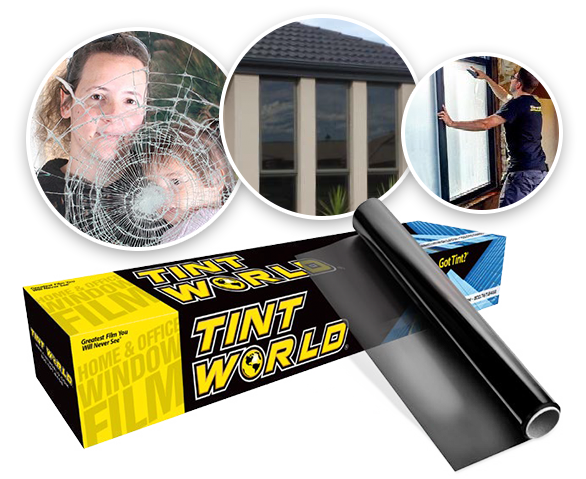Car Window Tinting for Warmth Decrease and Energy Efficiency
Car Window Tinting for Warmth Decrease and Energy Efficiency
Blog Article
Window Tinting Rules and Guidelines: What You Required to Know Prior To Tinting Your Vehicle
Before proceeding with window tinting for your lorry, it is crucial to familiarize on your own with the varied laws and guidelines that control this technique across various states. These policies determine the allowable degrees of tint darkness, often measured by visible light transmission (VLT) percentages, and include details stipulations for front windscreens intended at making sure roadway security. Furthermore, certain jurisdictions might supply clinical exemptions for people with qualifying conditions. Understanding these intricacies can save you from potential lawful implications, yet what are the particular regulations in your state?
Review of Home Window Tinting Laws
Window tinting regulations are often subject to variant throughout various territories, showing neighborhood guidelines and security considerations. These regulations determine the acceptable levels of tint darkness and reflectiveness on lorry windows, ensuring that vehicle drivers maintain adequate presence while additionally safeguarding versus dangerous UV rays and heat.
A lot of laws identify home window tinting based upon the Visible Light Transmission (VLT) percent, which indicates the quantity of light that can go through the window. Generally, reduced VLT percentages symbolize darker tints. Regulations frequently separate in between the front, side, and rear home windows, with more stringent constraints put on the front windscreen to boost safety and security for both the chauffeur and other road users.
Furthermore, some jurisdictions impose restrictions on the reflectivity of the tint, avoiding too much glow that could hinder exposure. Exceptions to these regulations might exist for people with details clinical conditions requiring extra sun protection. Conformity with home window tinting laws is vital, as offenses can result in penalties, mandatory removal of the color, and possible rises in insurance policy costs. It is crucial for car owners to familiarize themselves with regional regulations prior to continuing with window tinting setups.
State-by-State Color Rules
Understanding the particular window tinting laws in each state is important for vehicle proprietors looking for to comply with the regulation. Each state in the U.S. has developed its very own set of guidelines controling window tinting, which can vary substantially. These regulations often dictate the allowable levels of tint darkness, the types of home windows that can be tinted, and any clinical exceptions that may use.
As an example, states like The golden state have strict constraints on color darkness for front home windows, while others, such as New Mexico, might allow darker colors. Furthermore, particular states mandate details visibility percentages for different home windows, including the windscreen, front side home windows, and back home windows. It is vital for auto owners to acquaint themselves with their state's regulations to stay clear of possible fines or fines.
Additionally, some states might need a certification sticker to be put on colored home windows, showing conformity with state legislations. Failure to follow these guidelines not just runs the risk of lawful repercussions but can additionally influence security and exposure while driving. Vehicle proprietors ought to carry out thorough study or speak with regional authorities to make sure complete understanding and conformity with state-by-state tint guidelines.
Allowed Color Kinds and degrees
Many automobile owners might be stunned to learn that permitted tint levels and kinds vary commonly throughout different states. Each state has actually established its own regulations regarding the allowable darkness and reflectivity of window color, often determined by Visible Light Transmission (VLT) portions. VLT describes the amount of light that can go through the colored home windows; therefore, a lower portion suggests a darker tint.

Moreover, the types of tint materials enabled can differ, with some states banning metal or mirror-like coatings. It is necessary for lorry owners to familiarize themselves with their state's particular laws to make read this post here sure conformity. Non-compliance can cause fines, required removal of the tint, or various other lawful effects, making it crucial to comprehend these guidelines prior to waging installment.
Medical Exceptions for Tinting
While not all states supply allocations for clinical exemptions pertaining to window tinting, those that do acknowledge the necessity for certain individuals to boost visibility and convenience due to clinical conditions. Various medical conditions, such as lupus, skin cancer cells, and specific eye disorders, can provide people especially delicate to sunlight. Subsequently, these people might need darker colors to secure themselves from damaging UV rays and glare.

It is very important to note that also with a clinical exemption, there may still be constraints on the level of color permitted. Conformity with state regulations makes certain that individuals are both protected and within legal restrictions. Those considering clinical exemptions ought to call their local Department of Motor Automobiles or equivalent authority to recognize the procedures and requirements click here for more info essential to request an exception effectively.
Fines for Non-Compliance
Falling short to follow window tinting regulations can lead to substantial fines, which vary by state. Regulation enforcement companies are encouraged to provide citations for lorries that do not stick to the defined tinting policies. These charges normally consist of fines, which can vary from small total up to several hundred bucks, depending on the severity of the violation and the state in concern.
In some jurisdictions, duplicated offenses might result in rising penalties or added charges, such as obligatory court looks. Non-compliance might require the elimination of prohibited tinting, often at the owner's expenditure. In severe instances, regular culprits might face suspension of their automobile enrollment till compliance is attained.
In addition, insurance coverage ramifications may develop from receiving multiple citations for home window color infractions. Insurance firms may see such violations as a sign of riskier habits, potentially resulting in boosted costs or problem in coverage.
To prevent these charges, it is crucial for automobile proprietors to acquaint themselves with their regional window tinting legislations and make certain that their lorry complies (Window Tinting). This proactive technique not just prevents lawful implications yet likewise promotes roadway safety
Final Thought

The majority of regulations classify window tinting based on the Visible Light Transmission (VLT) percent, which indicates the amount of light that can pass with the window. Compliance with home window tinting laws is vital, as violations can result in fines, necessary removal of the color, and potential rises in insurance coverage premiums.Comprehending the certain window tinting guidelines in each state is crucial for lorry proprietors seeking to conform with the regulation. These regulations commonly dictate the permitted degrees of tint darkness, the types of windows that can be tinted, and any clinical exemptions that may use.
For instance, states look at this site like California have strict limitations on tint darkness for front windows, while others, such as New Mexico, might allow darker tints.
Report this page